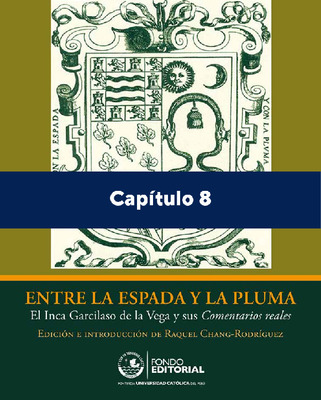| dc.contributor.author | Zamora, Margarita | |
| dc.date.accessioned | 2023-04-25T14:39:28Z | |
| dc.date.available | 2023-04-25T14:39:28Z | |
| dc.date.issued | 2010 | |
| dc.identifier.uri | https://repositorio.pucp.edu.pe/index/handle/123456789/192650 | |
| dc.description | Páginas 119-128 | |
| dc.description.abstract | The eighth and final book of Historia general del Perú (1617) contains a memorable triptych of Spanish colonialism. The images of the abuse of political power, among the most vivid in Garcilaso’s writings, focus on the execution of the last Inca, Túpac Amaru, the persecution of the mestizos of Inca descent, and the denunciation of Spanish injustice by an anonymous Indian woman whose mestizo son is incarcerated awaiting torture. There is both pathos and a critical edge in these images, as they expose raw social and political iniquities in the practice of Spanish colonialism by giving a voice to the dissent of the colonized. This dissent, moreover, erodes Spanish moral authority, shifting the ethical high ground toward the political margins. | es_ES |
| dc.language.iso | spa | es_ES |
| dc.publisher | Pontificia Universidad Católica del Perú. Fondo Editorial | es_ES |
| dc.relation.ispartof | urn:isbn:9789972429255 | |
| dc.rights | info:eu-repo/semantics/openAccess | es_ES |
| dc.rights.uri | http://creativecommons.org/licenses/by-nc-nd/2.5/pe/ | * |
| dc.source | Entre la espada y la pluma : el Inca Garcilaso de la Vega y sus Comentarios reales | |
| dc.subject | Crónicas--Perú | es_ES |
| dc.title | Regarding Colonialism in Garcilaso's Historia general del Perú | es_ES |
| dc.type | info:eu-repo/semantics/bookPart | |
| dc.type.other | Capítulo de libro | |
| dc.subject.ocde | https://purl.org/pe-repo/ocde/ford#6.02.03 | |
| dc.publisher.country | PE | |
| dc.identifier.doi | https://doi.org/10.18800/9789972429255.008 | |


